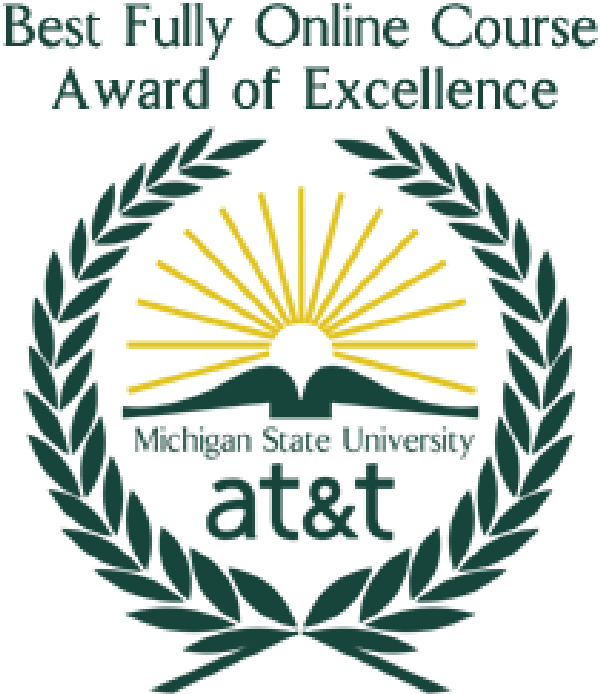NEU 841 is a required course for the fully online Medical Neuroscience Graduate Certificate Program. The course uses a systems approach to understand the healthy nervous system and begins to address dysfunction that occurs in disease. The course and the program were designed to provide educational opportunities to a wide range of adult learners. Online education opens doors for students who would not otherwise be able to enroll in courses due to work, family, or other responsibilities.
Students begin by accessing the digital syllabus, a website providing information in an easy-to-navigate format (you can click this link to open the digital syllabus in a new window). The design allows students to quickly find what they need. Graphics highlight important information, and alternative text added to the images improves accessibility. Students who prefer a traditional syllabus can visit the full syllabus HTML page or download a Word document.
Engagement with course content begins with students being placed into formal cooperative teams. The teams first work on a welcome assignment in which the students begin building their learning community, practice using the course tools, and read about course expectations. From there, they work on weekly problem set assignments that are distributed as Google Docs through Google Classroom.
Google Classroom is a tool that is perfect for the problem set format. It automatically creates a copy of a Google Doc for every student in the class; they can edit the document until they submit it for grading. After grading, ownership is returned to the student so corrections can be made. The user interface is simple making editing, submitting, and grading assignments issue-free. Problem set questions are often complex, requiring students to apply background knowledge from the text, actively engage with the content, and generate answers to novel problems. Using Google Docs allows questions to be asked in an online environment that require students to submit drawings, which can benefit learning (Quillin and Thomas, 2015); students can easily insert their artwork directly in the document using the built-in drawing tools or insert a picture of hand drawn artwork.
“Although it may not appear innovative to the student, the improvement of workflow that Google Classroom provides allows me to spend less time managing assignments and more time interacting with students,” Henley said.
Videos are used throughout the course to help students construct knowledge. The exams test the problem set material, so it is critical that students assess their work and correct their misunderstandings in a timely fashion (Brown et al, 2014). Review videos that explain the correct answers are shared after submission of the problem sets. Students are instructed to correct their problem set answers while watching the video. This allows the feedback to be instructional; the task of assessing their work makes the feedback effortful and can lead to continued learning as students evaluate where they need to focus (Hattie and Timperley, 2007). Additionally, mini-lectures are intended to be viewed prior to attempting the problem set material; they are short (3-7 minutes) videos that cover one concept with which students tend to have difficulty. All videos in the course are created using Camtasia to capture a PowerPoint presentation with voice-over audio, and longer videos are segmented to decrease the length of each video and help the student consume the information. All videos are also fully captioned prior to posting.
References
Anderson, T. (2017). How communities of inquiry drive teaching and learning in the digital age. Contact North. https://teachonline.ca/sites/default/files/pdf/e-newsletters/how_communities_of_inquiry_drive_teaching_and_learning_in_the_digital.pdf
Brown, P. C., Roediger III, H. L., & McDaniel, M. A. (2014). Make it Stick: the science of successful learning. Cambridge, Massachusetts; London, England: The Belknap Press of Harvard University Press.
Hattie, J. & Timperley, H. (March 2007). The power of feedback. Review of Educational Research, Vol. 77, No. 1, pp. 81-112.
Quillin, K., & Thomas, S. (2015). Drawing-to-Learn: A Framework for Using Drawings to Promote Model-Based Reasoning in Biology. CBE - Life Sciences Education, 14, 1–16. https://doi.org/10.1187/cbe.14-08-0128
Technology Used
- Camtasia video software (https://www.techsmith.com/video-editor.html)
- Google Classroom (http://googleapps.msu.edu)
- D2L learning management system (http://d2l.msu.edu)
- MediaSpace (http://mediaspace.msu.edu)
Team Members
Dr. Casey Henley, Lead Instructor

